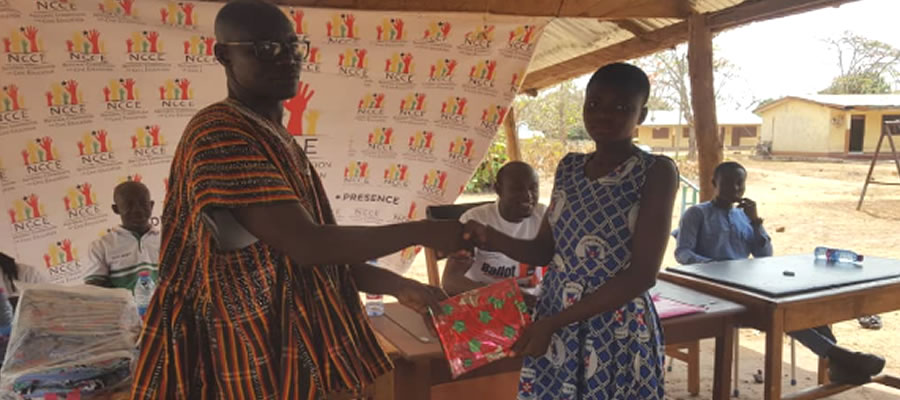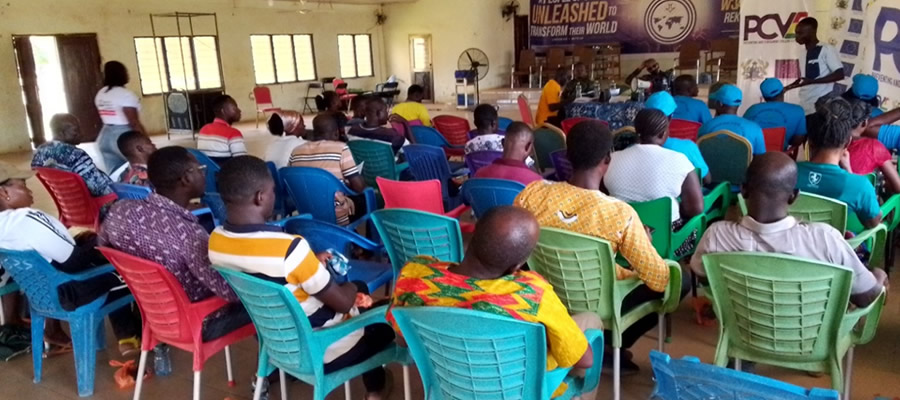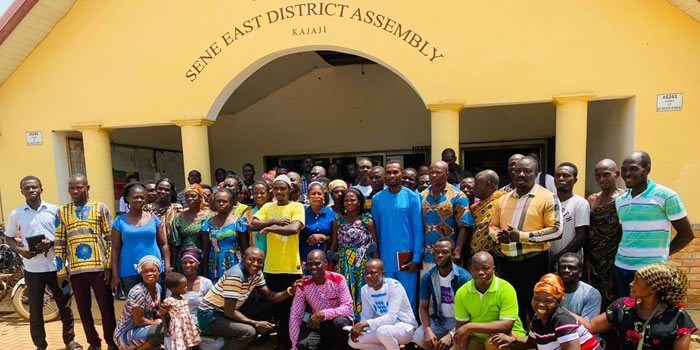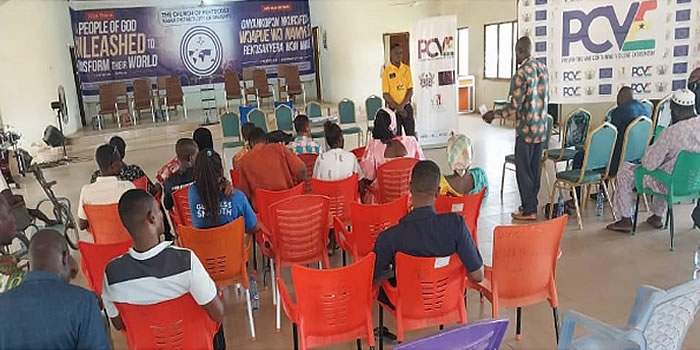

Literacy and Education
Literacy
Table 3.8 presents distribution of the population 11 years and older by literacy status and by age and sex. In the total population majority of the people can read and write English and Ghanaian language together and another 39.1 percent can do so in English language only. Less than ten percent (8.6%) can read and write Ghanaian language only. French, both alone or with English language or Ghanaian language, is read and written by less than one percent of the people. The proportions of people literate in English and Ghanaian language are highest in the older ages above 50 years and a similar pattern could be observed with Ghanaian language only. However, literacy in English only is highest among the younger ages. It seems to suggest that the younger generation in the district is paying more attention to English language than their older generation did. Between the sexes, males are better literate in English and Ghanaian language than females (54.8% versus 48.0%). However, females are better literate in English only (41.6% versus 37.3%) and in Ghanaian language only (10.2% versus 7.5%).
About 47.7 percent of the population 3 years and older have never attended school while 32.3 percent are now or currently in school and 20.0 percent have attended school in the past (Figure 3.2). There are variations in terms of male and female. There are more females who have never attended school (51.2%) compared to their male (44.6%) counterpart.
Table 3.10 shows population three years and older by level of education, school attendance and sex. A total of 17,589 of the population of the district are currently attending school. Almost all of them (93.4%) are attending basic schools, with 24.2 percent in pre-school (14.9% in kindergarten and 9.3% in nursery) and the remaining 69.2 percent at the basic level proper (55.3% in primary school and 13.9 percent in JHS/JSS. Only 6.2 percent are in secondary schools and less than one percent (0.5%) is in tertiary institutions. There are more females than males at the pre-school level (10.2% versus 8.5% at the nursery level and 15.6% versus 14.2% at the kindergarten level) and at the primary level (56.5% versus 54.2%).
The reverse is true from the Junior High School level (15.3% males and 12.1% females) and through the Senior High School level (7.0% males and 5.2% females) to the tertiary level (0.6% for males and 0.2% for females). The trend seems to suggest that school dropout among females after the primary school is a major issue in the district.
Table 3.10 also gives information about the past school attendance in the district. In effect, that represents the current level of education of the population in the district. The table shows that the level of education of the general population of the district is low indeed. As much as 84.2% of the educated people in the district have basic education only, comprising primary (35.0%), JSS/JHS (28.3%) and middle school (20.9%). Only 9.0 percent have secondary education and just 2.1 percent have tertiary education. Generally more males have higher education (secondary school and above) than females.
Date Created : 11/20/2017 2:37:28 AM











 facebook
facebook
 twitter
twitter
 Youtube
Youtube
 +233 593 831 280
+233 593 831 280 0800 430 430
0800 430 430 GPS: GE-231-4383
GPS: GE-231-4383 info@ghanadistricts.com
info@ghanadistricts.com Box GP1044, Accra, Ghana
Box GP1044, Accra, Ghana